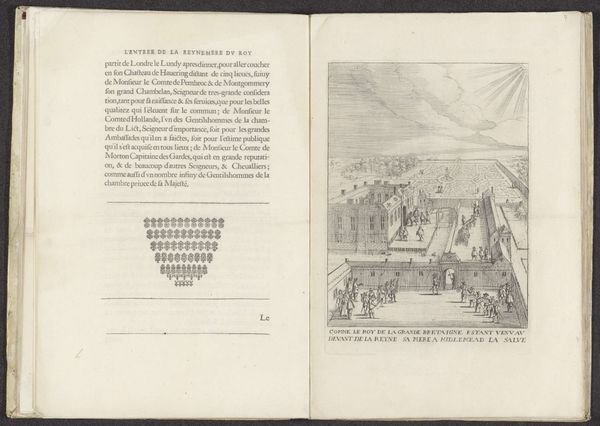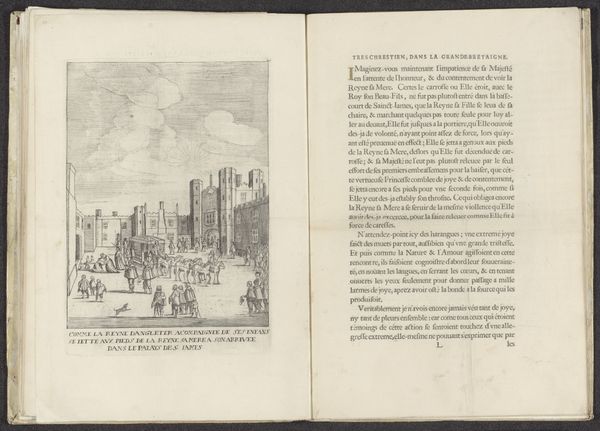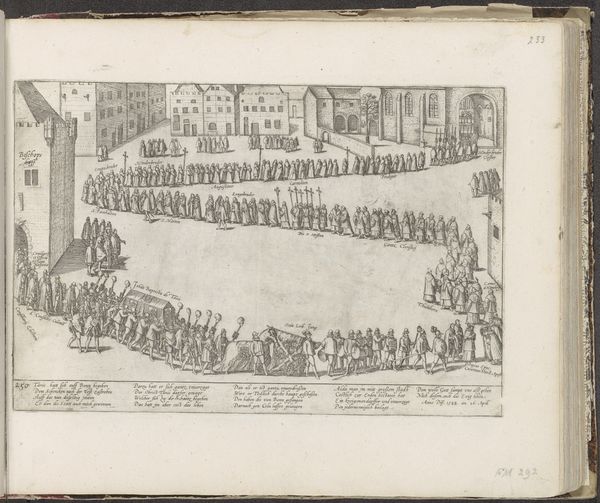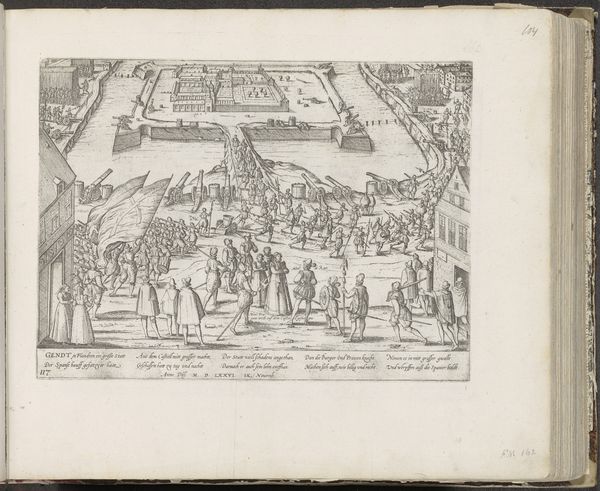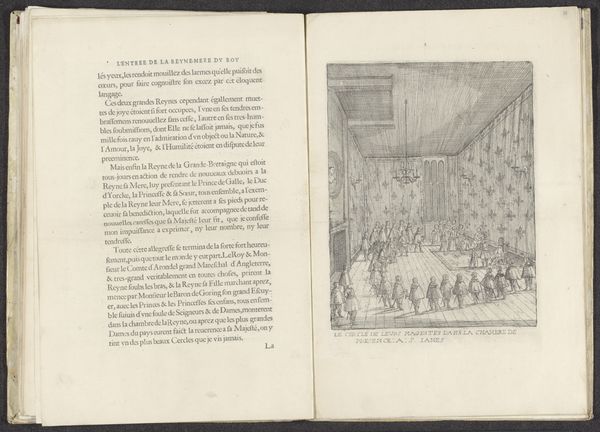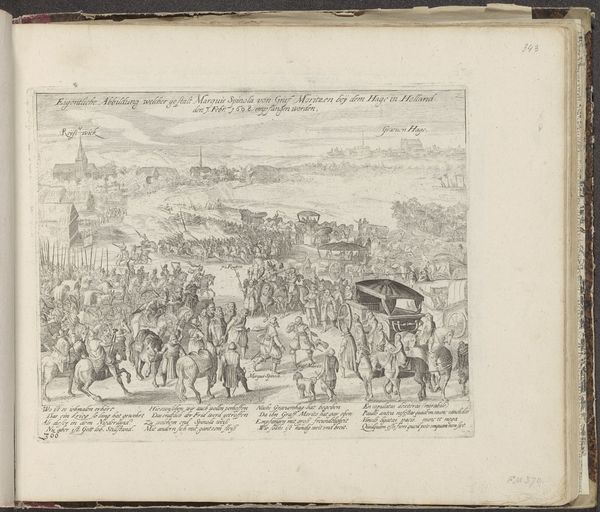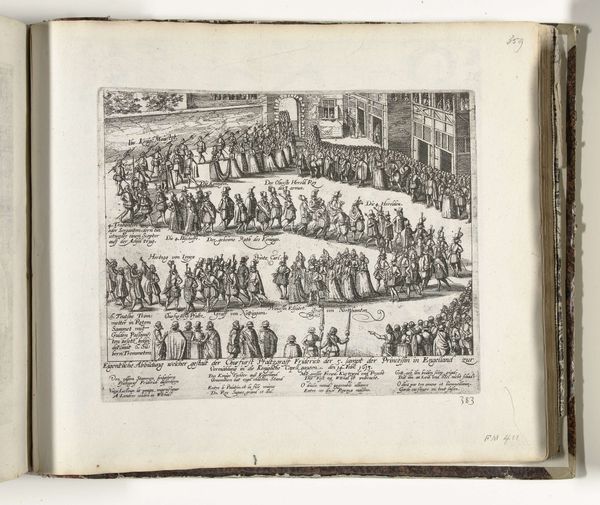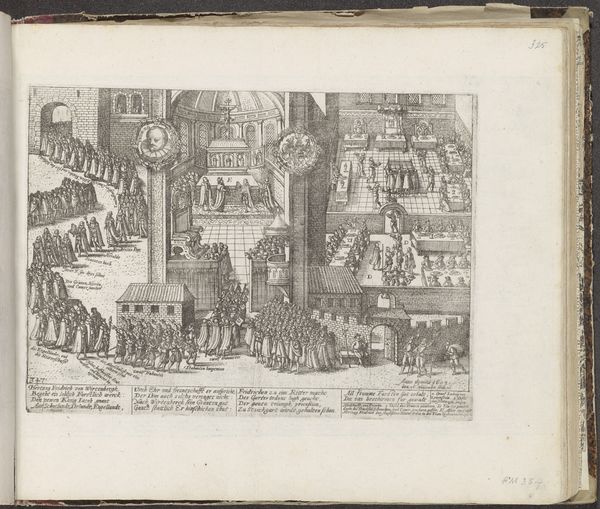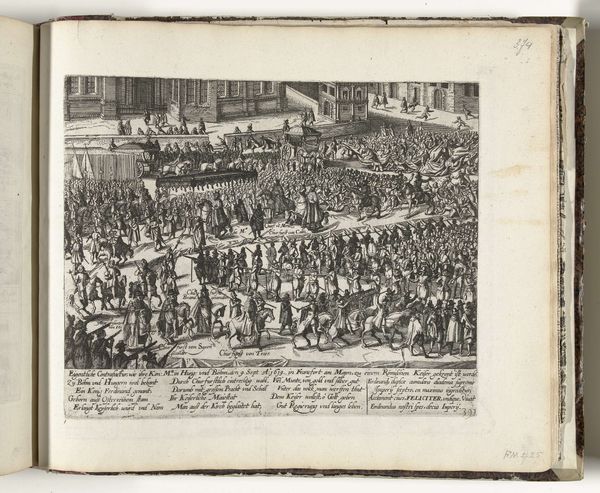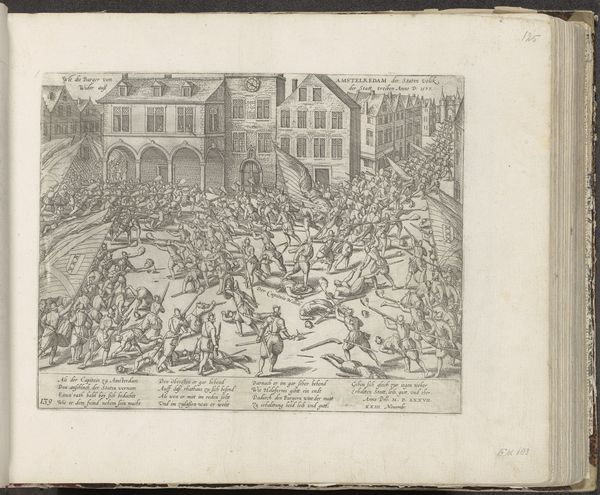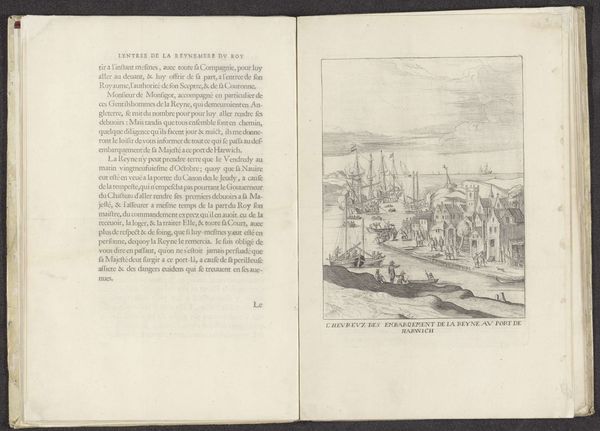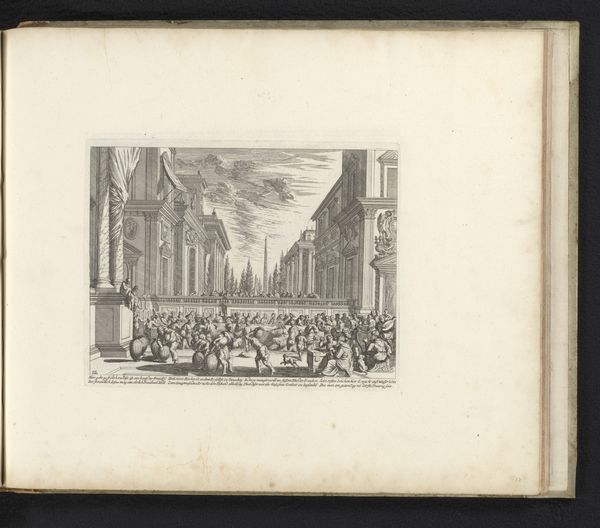
print, engraving
#
narrative-art
#
baroque
# print
#
cityscape
#
engraving
Dimensions: height 272 mm, width 193 mm
Copyright: Rijks Museum: Open Domain
Editor: Here's an intriguing image titled "Arrival of Maria de' Medici in the City of Colchester," dating back to 1639. It seems to be a print, maybe an engraving. There is a real feeling of pageantry, you know, ceremony. What strikes you most when you look at this? Curator: What immediately captures my attention are the visual symbols encoding power, Editor. Notice how the architectural features, like the city gates, become performative stages for demonstrating allegiance. It's more than just depicting an event; it's about staging a visual narrative of cultural memory. Editor: Cultural memory? Can you elaborate on that? Curator: Absolutely! Consider the procession itself. Parades like these create symbolic links to the past while shaping future expectations. Think of it: who gets represented? How are they positioned relative to the Queen? These details communicate unspoken values. Even the cannons fired during such parades carried historical symbolism. Editor: So it's less about historical accuracy and more about creating a particular cultural narrative? Curator: Precisely! And the fact that this moment was captured as a print meant this staged narrative could be reproduced and disseminated widely, further solidifying that memory and shaping public opinion. Look at the mirroring of text and image – how do you interpret this layout decision? Editor: I hadn’t considered the text… It's fascinating how symbols, like architecture, fashion and procession, carry complex social and psychological meanings that might be different from a simple illustration. Thanks for making me see that. Curator: Indeed. And in deciphering those layered symbols, we glimpse into the minds and memories of a society long past.
Comments
No comments
Be the first to comment and join the conversation on the ultimate creative platform.
